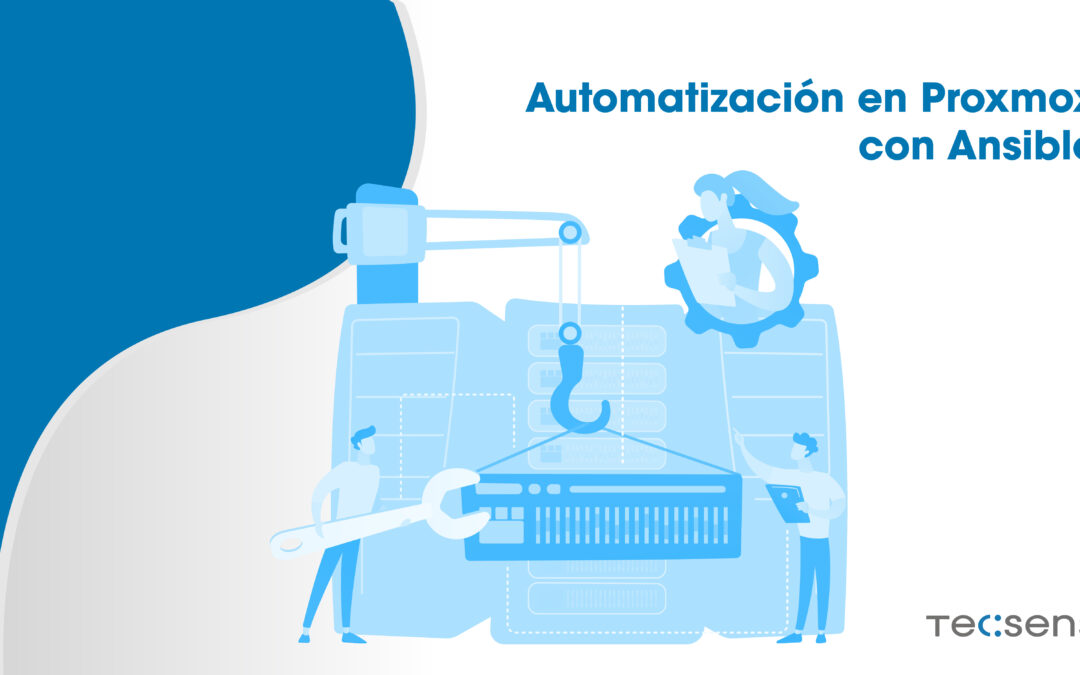Automating tasks in IT environments is a growing trend that allows organizations to improve efficiency, reduce errors, and free up human resources for more strategic tasks. Proxmox, a KVM and LXC-based virtualization platform, is a popular choice for server and container management. Ansible, on the other hand, is an open-source automation tool that simplifies system configuration and management. Together, Proxmox and Ansible form a powerful combination for automating tasks in virtualized environments.
Introduction to Proxmox and Ansible
Proxmox VE (Virtual Environment) is a complete virtualization management platform that combines KVM for full virtualization and LXC for container-based virtualization. It offers an intuitive web interface, support for high availability (HA), shared storage, and many other features that make it easy to manage virtualized environments.
Ansible is an automation tool that uses a simple YAML-based language called Playbooks to define configurations and tasks. Unlike other automation tools, Ansible does not require agents, simplifying its implementation and reducing overhead on managed systems.
Benefits of Automation at Proxmox with Ansible
Automating tasks in Proxmox using Ansible offers several benefits:
Efficiency
Automation reduces the time needed to deploy and configure virtual machines (VMs) and containers, enabling faster and more consistent management.
Error Reduction
By defining configurations and tasks declaratively in Playbooks, human errors that can occur during manual operations are minimized.
Consistency
Ansible ensures that configurations are applied uniformly across all nodes in the Proxmox cluster, maintaining consistency across the environment.
Scalability
It facilitates the management of large infrastructures, allowing nodes and resources to be added or removed without difficulty.
Integrated Documentation
Playbooks act as living documentation of the infrastructure and its configurations, facilitating maintenance and audits.
Deploying Ansible with Proxmox
To start automating tasks in Proxmox with Ansible, several key steps are required:
- Installing Ansible: First, Ansible must be installed on a control machine, which can be a local machine or a dedicated server. This can be easily done using package managers such as apt in Debian/Ubuntu.
- Inventory Configuration: Ansible uses inventories to define the hosts it will manage.
- Creation of Playbooks: Playbooks contain the tasks to be performed.
- Playbook Execution
Common Use Cases
Some common use cases for automation with Ansible in Proxmox include:
- Deploying VMs and Containers: Automate the creation, configuration, and deletion of virtual machines and containers.
- Network Configuration: Manage network configurations, including bridging and IP address assignment.
- Storage Management: Configure and manage storage volumes and snapshots.
- Maintenance and Upgrades: Apply software updates and perform maintenance on a scheduled basis.
Automating tasks in Proxmox using Ansible not only improves operational efficiency, but also brings consistency and reduces the risk of errors in the management of virtualized environments. As IT infrastructures continue to grow in complexity, tools like Ansible become essential to maintaining effective and agile management. The combination of Proxmox and Ansible is a powerful strategy for any organization looking to optimize its virtualized resource management.




